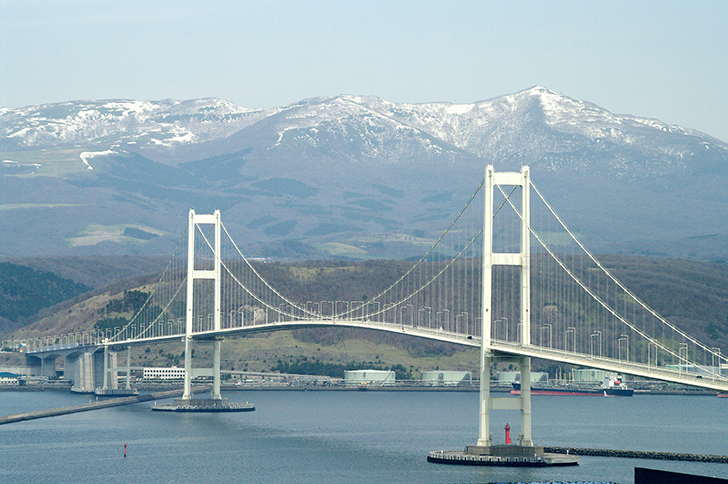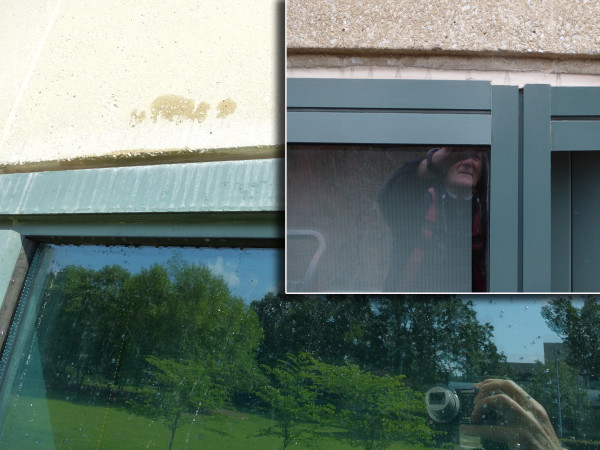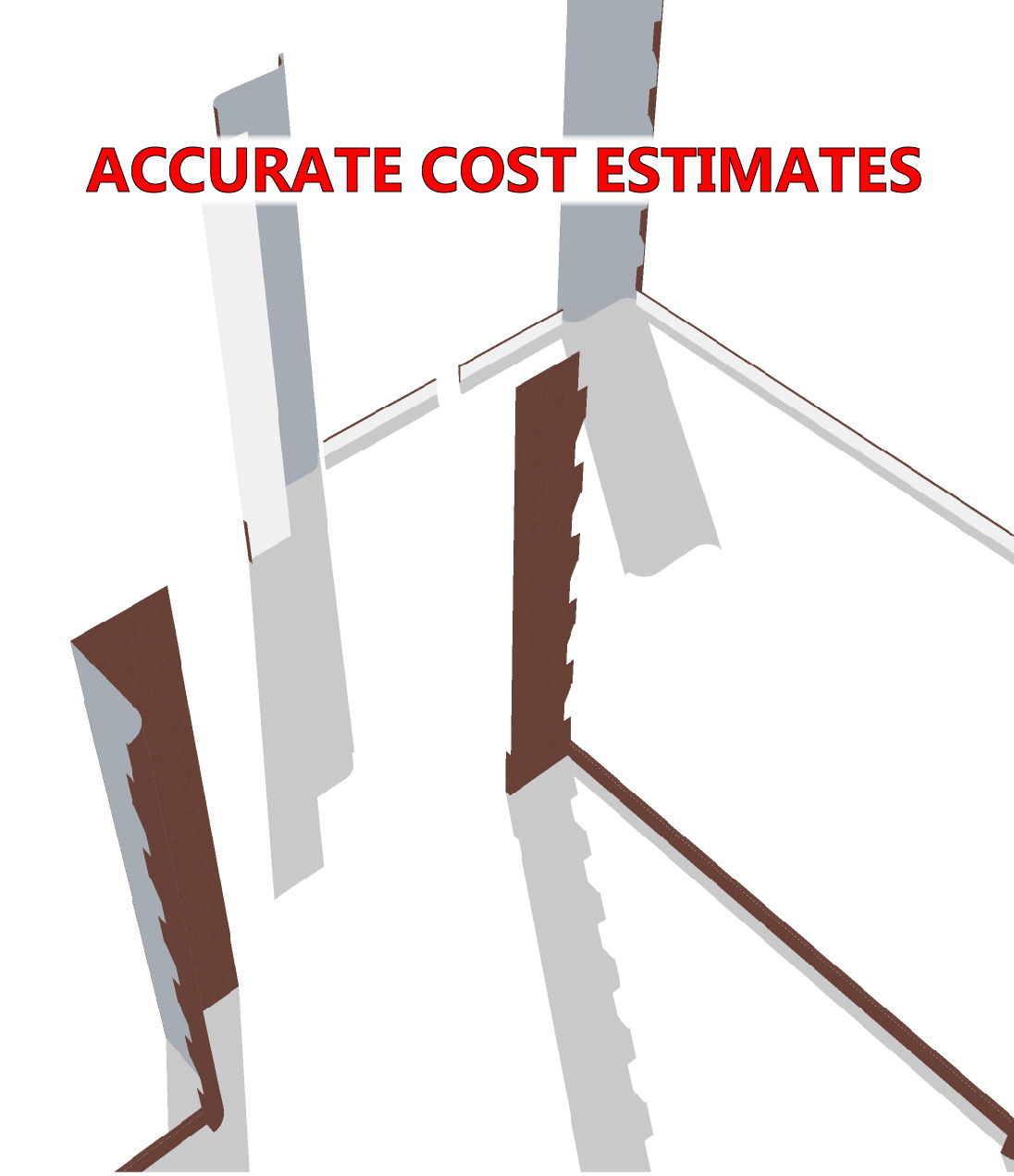Fluoropolymer
Fluoropolymers were the chance discovery in 1938 of Dr. Roy Plunkett, a DuPont chemist who helped his company develop PTFE (polytetrafluoroethylene) which was sold under the trade name Teflon. Many other fluoropolymers have been developed since. Among them are the ones described on this page which are used as architectural and marine coatings.
FEVE – Fluoroethylene Vinyl Ether
FEVE resins are solvent-soluble fluoropolymers used in many industries including marine and architecture on metal, masonry and concrete. This material has the highest UV protection qualities of all coatings. LUMIFLON, the Tnemic Corporation FEVE brand, can be either heat cured or cured at ambient temperature so it can be applied in the fabrication shop or in the field. Tnemic claims that perfectly matching coil coating colors and field applied coating colors is possible. LUMIFLON coatings can also be used to repair Kynar® PVDF coatings in the field.
Flouroethylene Vinyl Ether For Bridges
From this Design + Durability January 2015 article by Bob Parker (AGC Chemicals America): “The most popular long-life coating system in place at this time for bridges with challenging applications and environments is a three-coat system consisting of a zinc-rich primer, an epoxy midcoat and a polyurethane topcoat. . . . Fluoroethylene vinyl ether (FEVE) fluoropolymer technology has proven to be a successful addition to the global bridge coating market. . . . The FEVE polyol resins (can) play an integral part in the topcoat layer, replacing the standard acrylic or polyester polyols as the principle binder.”

FEVE Coating Simulates Dazzling Gold Leaf On Facade Restoration
The Zion’s Cooperative Mercantile Institution (ZCMI), founded by Brigham Young in 1868, is listed on the National Register of Historic Places. In restoring various pieces of cast iron and sheet metal cornice sections an array of Tnemec high-performance coating systems, including Tnemec’s Fluoronar coatings, which include Lumiflon fluoropolymer technology were used.
Polyvinylidene Difluoride – PVDF
PVDF coatings are made of resin and inorganic ceramic pigments. They are factory applied on aluminum and steel coil stock and extrusions for architecture and can last for decades without chalking or color change. Products that can be applied in the field are also available. PVDF coatings are among the most durable of coatings yet developed. There are several types of PVDF coatings: coil and extrusion PVDF coatings, liquid PVDF spray coatings and powder PVDF coatings. Few coatings companies supply PVDF coatings since all PVDF coatings suppliers must obtain licenses from PVDF resin suppliers, AtoFina and Solvay, who are the only two suppliers of PVDF resin with the trade name Kynar 500 and Hylar 5000. PPG, Valspar, Rohm & Hass and Akzo are the main liquid PVDF coatings suppliers. Rohm & Hass and FineShine are the main PVDF powder coatings suppliers.

Information on Factory Application of PVDF products on Architectural Metals
Valspar Technical Paper on PVDF
PVDF Coatings Review on Engineersedge.com
How to Decide Between Anodizing, Painting, and Powder Coating
Provided by SAF (Southern Aluminum Finishing), aluminum sheet and extrusion distributor, this article addresses anodizing but it is mostly about PVDF liquid and powder coatings.
Field Applied Products
PPG Corporation Coroflon® Fluoropolymer
CORAFLON® ADS is a field-applied, two-coat system composed of a universal primer and a fluoropolymer topcoat that requires little maintenance. It can be used on properly cleaned and pre-treated aluminum, clad steel, concrete, glass, or plastic substrates. CORAFLON ADS cures chemically into a durable, inert fluoropolymer coating that is highly wear and weather resistant. Bright, vivid colors, including metallics, are available in a wide range of gloss levels (20 – 80%).
Curtain Wall Restoration Using Field Applied Fluororpolymer High Performance Coatings
This white paper includes the history of fluoropolymer development, information on the chemistry and physical properties of PVDF coatings, applications for the material, surface preparation and coating application information.
Tnemec Corporation Series 1070 Flouronar® Advanced Thermoset Solution Fluoropolymer
Advanced, high-solids, two-part, thermoset solution fluoropolymer that provides an ultra-durable finish. Series 1070 products can be applied with brush, roller and conventional spray equipment. It maintains color and gloss even in the most severe exposures. Under certain conditions it may be used to restore aged, factory applied fluoropolymer coatings or for OEM applications. Tnemec’s Technical Services and local representatives can provide details.
Hallidie Building in San Francisco, California, Restoration
SSPC-SP6/NACE No. 3 Commercial Blast Cleaning established the criteria for the Ornamental components on this historic structure while window frames, sashes, metal grates and railings were prepared in accordance with SSPC-SP10/NACE No. 2 Near White Blast Cleaning. These components was primed with Series 90-97 Tneme-Zinc, an aromatic urethane, zinc-rich primer. Repaired and replaced components were primed with Series 135 Chembuild, a modified polyamidoamine epoxy. The specified intermediate coat was Tnemec Series 1075 Endura-Shield II, an aliphatic acrylic polyurethane coating. Nearly 235 gallons of Series 1075 was used. Blue-colored components received either Series 1071V Fluoronar, a low-VOC semi-gloss fluoropolymer coating, or Series 1072V Fluoronar, which offers a satin finish. Gold accented components received a coat of Series 1078 Fluoronar Metallic, followed by a clear coat of Series 1079 Metallic Clearcoat. Interior Structural steel outriggers were primed with Series 115 Uni-Bond DF, a hydrophobic acrylic coating, followed by a coat of Series 1029 Enduratone, a High Dispersion Pure acrylic polymer coating.

Water Towers that win awards leave “A Lasting Impression”
Tnemec.com news on the water towers coated with various products that received awards. Information on the individual projects includes specifics on the materials and surface preparation. The exterior of the tank pictured here was prepared in accordance with SSPC-SP7/NACE No. 4 Brush-Off Blast Cleaning and was primed with one coat a modified polyamine epoxy (Tnemec’s Series 135 Chembuild for marginally prepared steel and tightly adhering old coatings). Tnemec’s Series 1075 Endura-Shield II, an aliphatic acrylic polyurethane was the intermediate coat. This product is highly resistant to abrasion, wet conditions and exterior weathering. The finish coat was an advanced fluoropolymer, Tnemec Series 700 HydroFlon. Two coats of Series 700 were also used for the lettering and mural. Nineteen colors used in the mural, ranging from tank white, to different shades of blues, greens and browns. Multiple projects are described on this page and although some use the same materials there are many variations. Reviewing the information that Tnemec has provided will help anyone seeking to coat similar steel structures or specify the requirements for doing so.
Public Works Magazine article on 5 Award Winning Water Towers
These projects were all coated with Tnemec products including Series 135 Chembuild primer.




